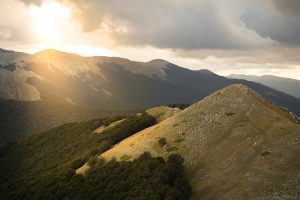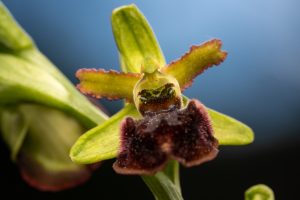VENUS LAOWA 85MM f5.6 2:1 MACRO APO REVIEW AND PERSONAL EXPERIENCE
Macro photography, just like many other types of photography, is a hobby or rather a form of art you really grow into. When I started macro photography, I believed that getting the best lens for my camera with autofocus and stabilization capabilities (such as a Sony 90mm f2.8 G), was going to be the best option for myself. Little did I know that these criteria are actually not relevant for my photography style but rather other ones as I will explain in this blog.
Right before departing for a recent trip to Peru, I contacted Venus Laowa to see if I could test one of their 2:1 macro lenses in the field. As they did not have their amazing 100mm f2.8 Ultra Macro APO available, they kindly offered me to test the new 85mm f5.6 2:1 Ultra Macro APO – the world’s smallest 2x macro lens for full-frame mirrorless camera systems.

Whether I am making my way through the Peruvian Amazon or hiking in the Italian Central Apennines I like to carry with me all of my gear. Therefore, it was clear that this lens would have suited my needs perfectly. The new 85mm FF mini, comes in an ultra-compact size, as you can see from the specs table taken from Laowa’s website.
The reason why this lens is so compact, is because its maximum aperture is set at 5.6, instead of 2.8. Some of you might think this is a problem, but I dare you to find macro photographers that use a f-stop of 2.8 when taking photos at 1:1 or 2:1 magnification (without focus stacking technique).
I won’t be going over the single specs, but in this review you can read about my personal experience with it, what I like and dislike about it.
WHAT I LOVE ABOUT THIS LENS
Did I already mention its ultra-compact size? I don’t think I can emphasize enough but you get an idea by looking at it mounted on my Sony A7III.

Built-in quality, weight and design: This lens, like other Laowa lens, is amazingly built. The weight fits perfectly the lens size, thanks to an all metal body. The only plastic I can see is in the interior of the lens, and the lens cap. Even the lens hood is made out of metal.
The design itself is very ergonomic, although it can look a little “awkward” when mounted on a full frame body. I think this detail is easily forgiven, when you think about its weight: 291g (Sony FE with no lens hood). It basically feels like you are only holding the camera.
I personally think this plays a huge advantage for those that have a twin flash setup with brackets, as it saves you quite a bit of weight!
Aperture ring: Another thing that I really like is the fact that the aperture ring has clicks. I own the Laowa 15mm f4.5 wide-angle macro, which does not have this feature, and for example sometimes I find myself shooting at f8, instead of f16 without even noticing (until I review the images on camera).
Focusing: At first, using a manual lens with no electronic coupling (EC) was a bit tricky, because the focus was never as precise as manually focusing with my Sony 90mm. This is because when using a lens with EC, the lens automatically opens the aperture blades to their maximum, in order to help with focusing, and light. By using the lens, I became more and more accustomed to not having EC, and now I find it very easy to nail focus even at f11-16!
As the say… “practice makes perfect”
Another additional feature is that the lens focuses to infinity. When I was in Peru, working with the Maijuna Community for ACEER foundation, I used this feature to capture some portraits of them in the field, making it very versatile, although the maximum aperture is set to f5.6.

Magnification: The only thing I can say here is that being able to use a lens, built strictly for macro, with the possibility to extend to 2:1 magnification is simply amazing. Before, I had to work with extension tubes or close-up filters, which sometimes can give inconsistent results. Now I can do it all with one lens! Here’s an example of a shot taken at 2:1 with slight crop and at f16… I’ll let you judge if it’s sharp enough.

Sharpness: The tiny lens is exceptionally sharp. I find it short thought its apertures. If I can recommend something is not to push it above f16 at 1:1, and f11 at 2:1, although I managed to get great results even pushing it above the “limit”.



WHAT I “DON’T LIKE” ABOUT THE LENS
I really had to find the needle in a haystack to write this section, but if I have to say something… here you go!
Focusing ring: The only “drawback” I see here, but I won’t necessarily consider it a negative aspect, it that at 1:1 magnification, there is not a precise marking to indicate it. In short: you have to estimate where the correct magnification is. This is not hugely important but, if you were to do a review of this lens with another 1:1 lens, this would not be as precise.
No weather sealing: I think it doesn’t really matter, but a little bit of weather sealing on this lens (and future Laowa lenses) would be great. I used it in the tropics, and never had a problem, but I never shot when it was raining a lot.
Flaring: The only real problem I found when firing the flash at a certain angle is that it created a strong flare, even with the lens hood attached. I changed slightly the angle, and was able to get this shot with a perfect pitch black background, so this problem is easily corrected.

CONCLUSIONS
Now that you read my review and experience with the lens, I can tell you that it never leaves my backpack. In fact, I stopped using the Sony 90mm, simply because I cannot go beyond 1:1 magnification with it. Do I miss AF? In short, I do not. I only miss it when I am working with venomous snakes or when I am shooting the occasional portrait (which does not happen often).
Overall, minimum working distance is not a problem for me, although some of you might see it as a disadvantage.
This lens is ideal for people who travel and do not want to carry a lot of weight around, as well as someone that wants a backup macro lens that can reach 2:1 (without giving away sharpness), allowing you to capture details perfectly.
Let me know if you want me to compare it to the 90mm Macro from Sony or any other lens.
One last thing I did not mention is the price. This lens is priced at around 500$, which makes it very affordable as a first macro lens.
I am not sponsored by Laowa, nor I get payed from them, but if you would like to buy this lens and if you enoyed this review, you can use my affiliate link: https://www.venuslens.net/ref/502/
Here’s a quick summary of PROS & CONS:
PROS:
- Price
- Weight
- 2:1 magnification
- Easy to focus (even at 5.6)
- Sharp as hell
- Focuses to infinity
- Build quality
- Aperture ring has clicks
CONS:
- No weather sealing
- Flaring
- No marks at 1:1


